
If you’ve ever Googled ‘how to improve my child’s reading skills,’ you’ve probably seen lots of classroom-style post-reading activities. Not very helpful for parents at home.
But here’s the thing, some of the best comprehension boosters don’t happen in the classroom. They happen in your home.
As a teacher, I’ve seen how little time schools have for deep reading reflection. That’s why home is the perfect place to build comprehension and confidence.
Post-reading activities help kids reflect, remember, and make connections. It’s not just better reading, it’s better thinking.
Here’s what you’ll discover in this post:
- 5 simple post-reading activities to boost memory and comprehension that take no preparation time.
- Ways to tailor each activity to your child’s interests and personality type.
- How reading time can strengthen your parent-child bond.
Before we jump into post-reading activities, it helps to set the stage. Here are some easy pre-reading activities to engage your child before the book even begins.
One of the most effective? Start with a purpose! Before reading, encourage your child to ask: “Why am I reading this?” This simple question has been shown to increase both reading comprehension and motivation.
When kids have a goal in mind, they stay more focused. And after reading, your chosen activity can help them reflect on whether they achieved that goal.
Once they’ve read with a purpose, it’s time to reflect. And that’s where post-reading really shines.
Start With These Post-Reading Activities!
- #1 Retell It!
- #2 Get Creative!
- #3 Teach It!
- #4 Talk It Out!
- #5 Spotlight It!
- You’ve Got This!
- Download Your Free 5 Finger Retell Activity Pack
#1 Retell It!
Why it works
If there’s one easy trick that really sticks, it’s having your child retell the story in their own words.
Retelling helps them lock in the story by practicing sequencing, picking out key ideas, and figuring out what really matters. These skills boost comprehension big time.
Try it At Home
When trying this out at home, keep it casual. The next time you’re brushing your teeth or driving to school, toss out a few simple questions about the story like “What happened?”, “Who did that?”, and “Where did that take place?”

Don’t worry about squeezing this in right after the book ends. In fact, waiting a day or two is a great way to check what really stuck.
If your child needs a bit of structure, try the Five Finger Retell. Each finger helps them remember a key detail:
Five Finger Retell:
- Pinky: WHO was in the story?
- Ring: WHAT happened?
- Middle: WHERE did it take place?
- Index: WHEN did it happen?
- Thumb: WHY do you think that happened?
In my house, we usually chat about the bedtime story during breakfast the next day. I’ll kick things off by saying, “I had a dream about that dragon last night…” It always gets them talking.
You know your child best, so try what fits. Maybe they’d prefer retelling it to their stuffed animals, or acting it out with puppets or toys if confidence is low.
If post-reading activities like retelling helps them understand what happened, creativity helps them explore how it felt.
#2 Get Creative!
Why it works
Not every child is a natural storyteller, and that’s fine. Some kids make sense of what they’ve read best by drawing it, acting it out, or making something with their hands.
When they reimagine a story through their movement or creativity, it sticks. It becomes theirs, not just words on a page.
Try it at Home: Drawing
Got a budding artist? Have them draw their favourite scene or character. Older kids might even enjoy redesigning the book cover.
Get creative: crayons, sidewalk chalk, markers on a window! Anything that feels like play, not homework.
Quick tip: My kids started drawing every day once I kept paper and pencils downstairs within easy reach.
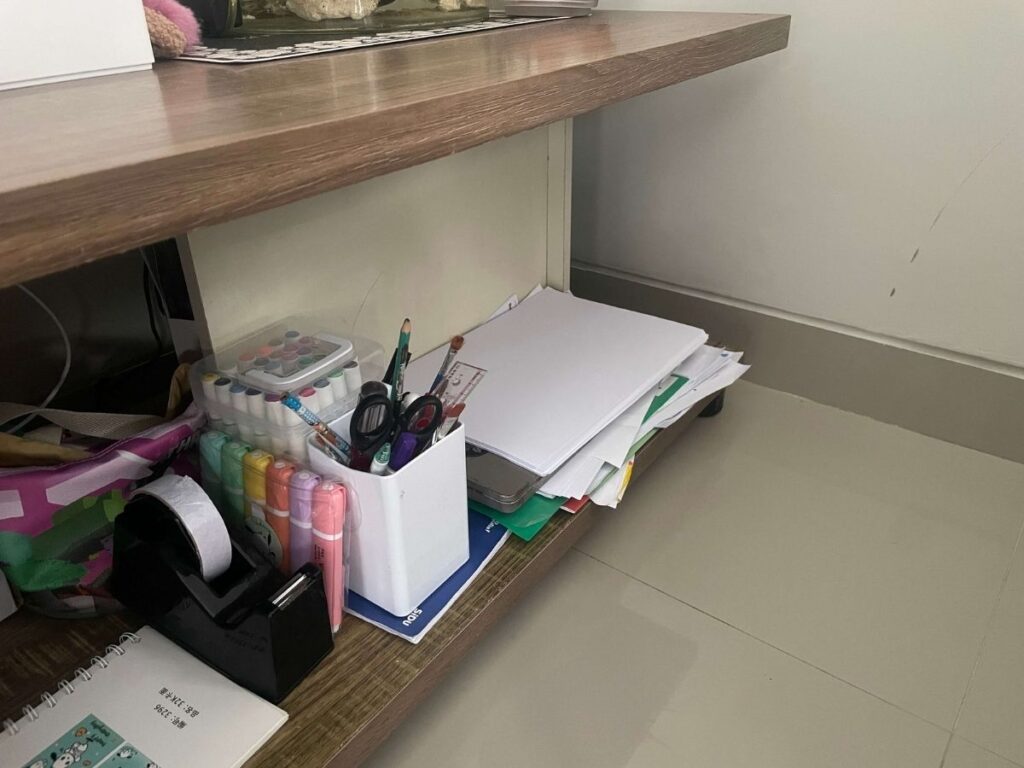
Try it at Home: Acting
More of a performer than painter? Set up a little ‘stage’ and let them act out scenes using toys, puppets, or stuffed animals. This time, don’t worry about accuracy. Let it be dramatic and fun.
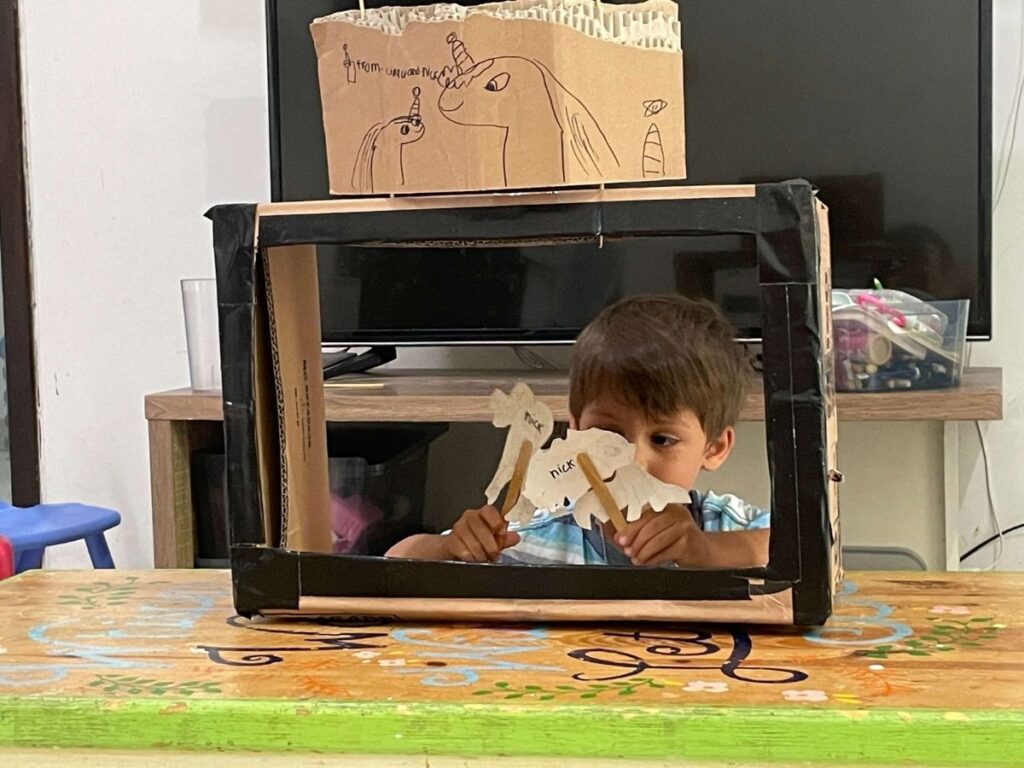
Last year, I walked in the living room and found every stuffed animal lined up on the couch. They were watching a puppet show starring the My Little Pony crew, all directed from memory by my daughter.
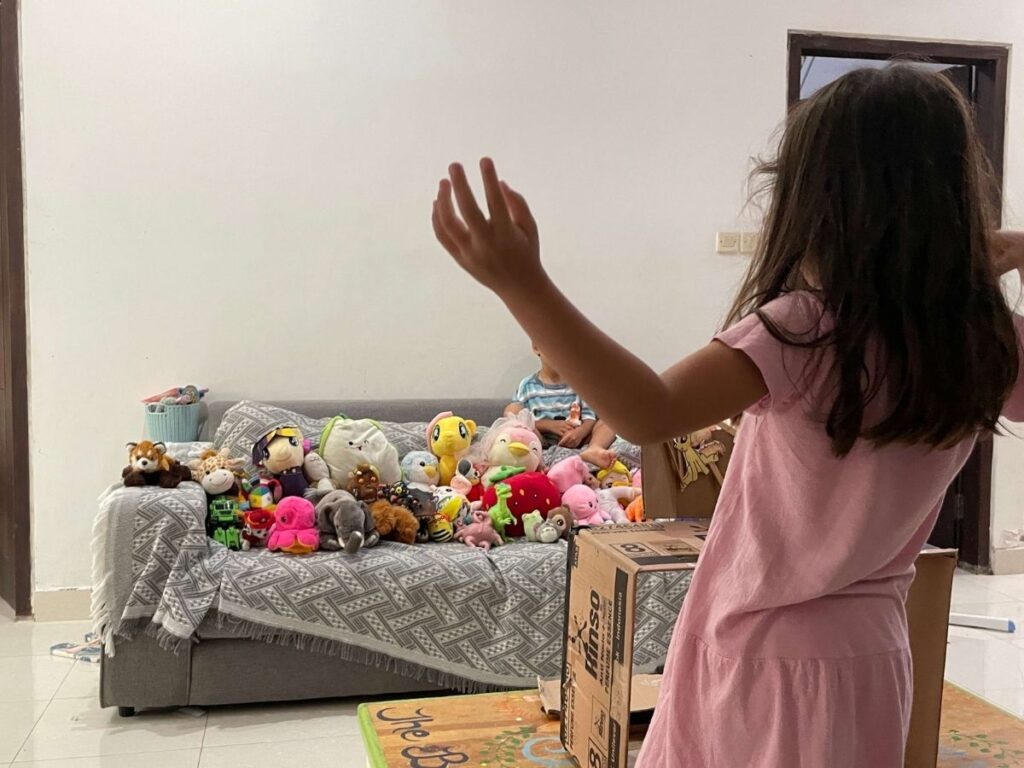
When your child knows the story well enough you can stretch their imagination. “What if the dragon and the princess became friends?” Challenge them to change the ending: in a comic strip, a new puppet show, or a storyboard.
Turning stories into new ideas gives them a creative boost that most worksheets don’t.
Not every child likes drawing or acting. For more analytical thinkers, teaching the story is a great way to reinforce comprehension.
#3 Teach It!
Why it works:
Teaching is one of the best ways to learn. Trust me, I’ve seen it firsthand.
When your child plays the role of teacher, they’re processing the story, picking out key ideas, and explaining them in their own words. That makes learning stick, and helps them feel like the expert.
Try it at Home
Invite your child to ‘teach’ the story to you, a sibling, or even their stuffed animals. Let them run story time like they do at school.
You can nudge them with simple questions like, “What should I remember from this story?” or “Can you explain that part again?”
Set up a mini classroom: A whiteboard, a pointer, a few plush students. It doesn’t take much for it to feel real.
Quick Tip: To extend this you can ask them to make a poster, chart, or flashcards for their ‘lesson.’
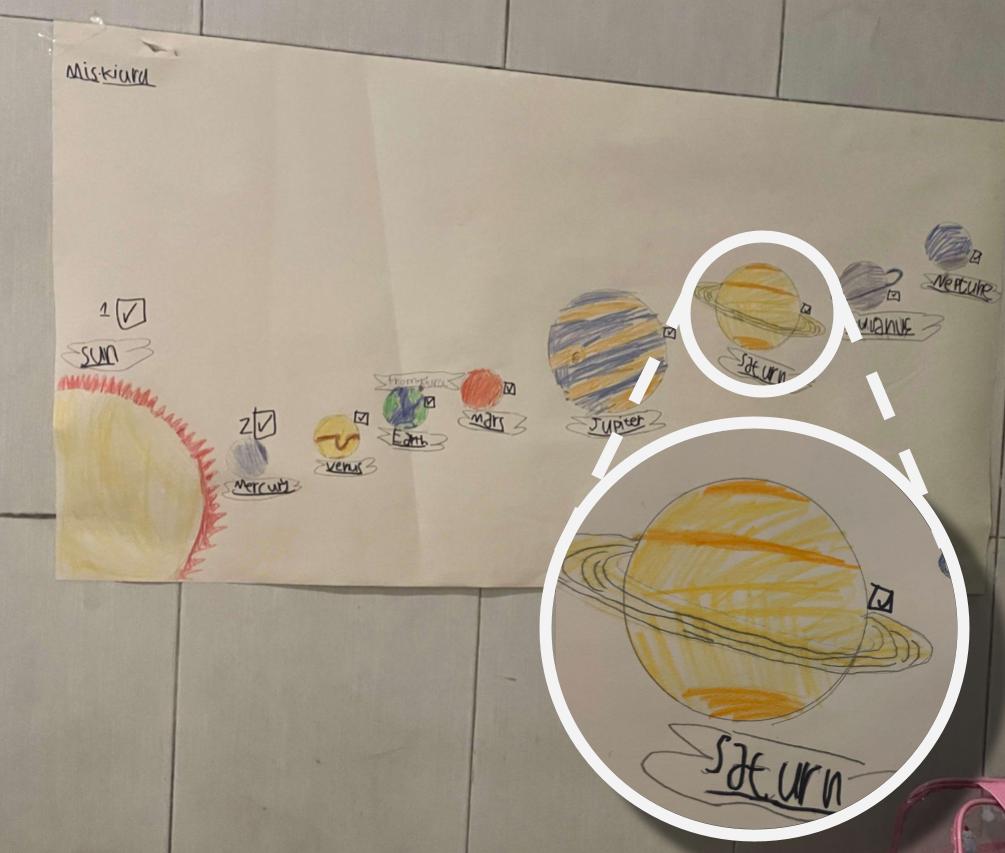
After reading a book on the solar system, I pretended not to know what it was. My daughter drew a full model of the planets and taught me everything, from names to their order.
She used the book as reference and even got the planet colours right. We hung the poster on the wall, and she still remembers all the planets (Something I can’t say for myself!)
Another day, I found my daughter deep in ‘teacher mode’. She’d handed out books to all her stuffed animals and was walking around explaining each story.
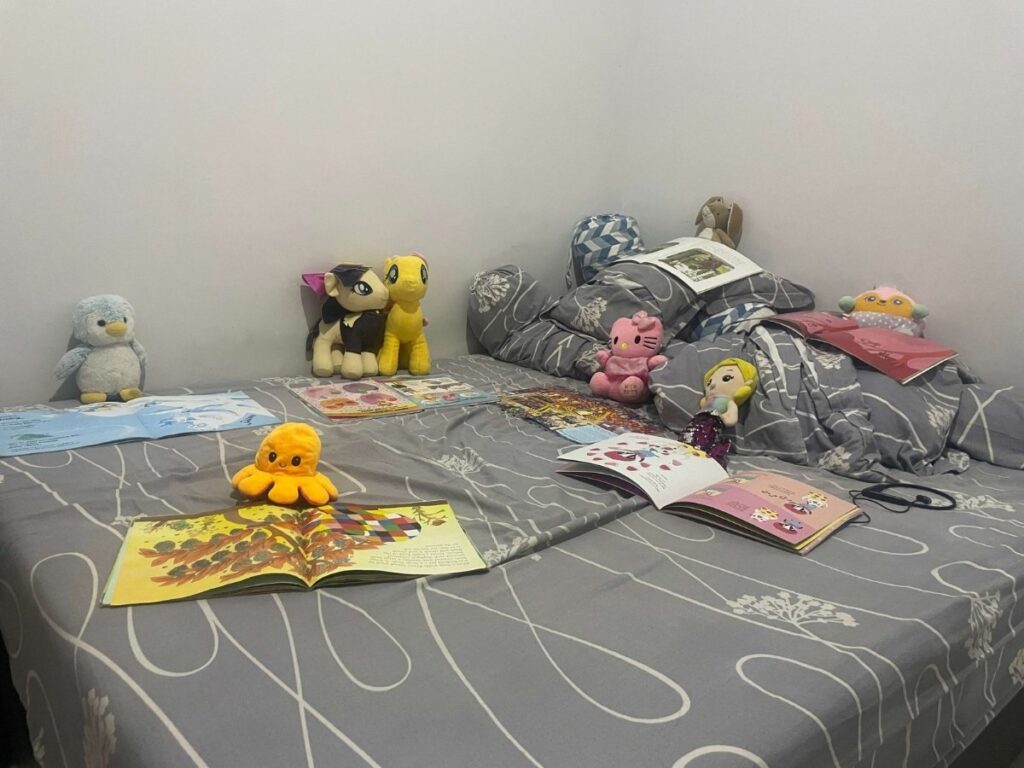
It looked like play, but she was summarising multiple stories from memory. That’s comprehension in action!
Once your child has shared what they know, keep the momentum going by turning it into a real conversation.
#4 Talk It Out!
Talking about a book turns reading into something more meaningful. It’s not just about what happened, it’s about what it meant!
While retelling focuses on the plot, conversations invite your child to share thoughts, feelings, and ideas. It’s the shift from “What happened?” to “What do you think?”. And that’s where real understanding grows.
Why it Works
Ever noticed how you remember something better after talking about it? That’s because conversation helps organise thoughts and lock in memory.
When your child talks about a book, they’re revisiting it. First while reading, then again through discussion. And each time they talk about it with someone new, the memory deepens.
Talking to someone they love, like a parent or friend, adds emotion to the experience. And emotion makes memories more vivid.
Try it at Home
Bring it into everyday moments. Ask about the book while you’re walking the dog, eating dinner, or driving home from school.
Or if your family likes routines, try a weekly ‘Book Chat’ night.
In my house, casual chats work best. Because they happen naturally, we’ve been able to stick with them long-term.
Keep it short, but go deep. Move beyond “What happened?” and ask the kinds of questions that help your child think critically, solve problems, and be creative.
Questions that tap into:
Critical Thinking
- “Do you think the character made the right choice?”
- “What do you think the message of the story is?”
Problem Solving
- “What would you have done in that situation?”
- “What advice would you give that character next time?”
Creativity
- ”How would this story change if it were told from a different character’s point of view?”
- “What would happen if we added a new character?”
You don’t have to limit these chats to home. Try arranging a book swap with a cousin or friend.
When the kids reconnect, encourage them to talk. Even a quick “Did you like it?” helps cement what they’ve read.
With consistency, these conversations build strong reading habits, and they don’t have to end after the book. Here are a few ways to keep kids engaged while reading, too.
Now, Let’s end with one final strategy that can be used to enhance the others in this post and make your child’s efforts feel special and seen.
#5 Spotlight It!
Why it works
When kids see their efforts being recorded or displayed, it boosts motivation, confidence and self-esteem.
It also gives your family a chance to celebrate learning together by revisiting material.
Why This is Different
Unlike the other post-reading activities, this isn’t a standalone task. It’s a way to elevate anything your child does after reading.
Whether they’re acting out a scene, teaching a homemade poster, or retelling the story with toys, you can make it feel special just by recording or snapping a photo.
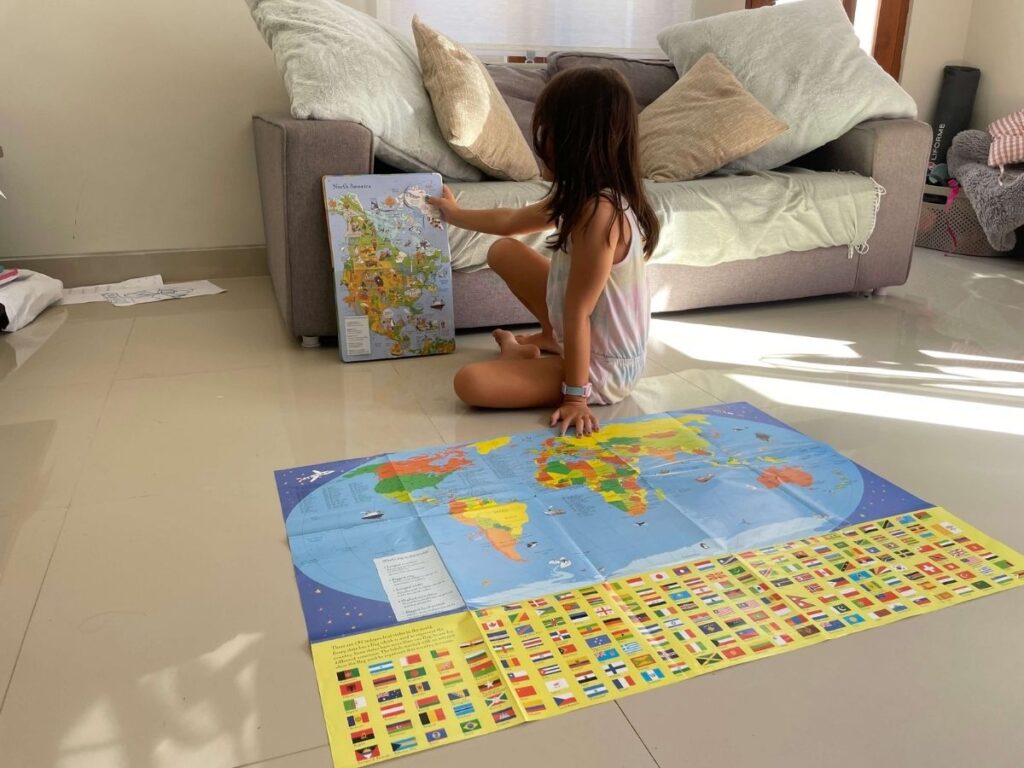
Why Record?
- Kids feel proud when their work is noticed.
- Recording shows that effort matters, and that can spark even more enthusiasm.
- Watching themselves later helps reinforce learning and strengthen memory.
- Sharing recordings with loved ones makes them feel seen and celebrated.
My daughter loves this. And while we do limit screen time, I’ve found this to be a positive use of phones.
When I say “Let’s record this for Grandma,” she lights up, puts in extra effort, and enjoys it even more.
It’s like the 21st century version of putting their work on the fridge. (And yes, the fridge space still works too!)
Helpful Guidelines for Phone Use:
- Set boundaries. No need for social media, sharing with family is enough.
- Make it a family thing. Everyone can join in, even just by being a cheerful audience.
- Keep it short and fun. The goal is connection, not perfection.
- Model responsible tech use. Show kids that devices can be creative tools, not just distractions.
Now that you have a handful of activities to get started, let’s take a step back and talk about why these moments matter.
You’ve Got This!
No Classroom Required.
These post-reading activities aren’t hacks or shortcuts. They are learning.
They mirror the same principles teachers use in classrooms every day: revisit, reflect, and engage.
Real understanding comes from thinking, talking, and doing something with what we read.
The best part? You don’t need a teaching degree, lesson plan, or fancy materials to get started. Just your presence, and a space that feels welcoming, is enough.
Discover how a few simple changes at home can make reading even more inviting and help the habit stick.
At home, your one-on-one attention in a familiar, comfortable place creates a personal connection with each story that a classroom can’t match.
Remember Why You Started
Remember that question from earlier: “Why am I reading this?” Now’s the time to answer it together.
Whether your child read to learn, imagine, or connect, talking about it brings that purpose to life.
Meaning makes things memorable. And memories deepen connection.
Next Steps
Each activity suits different moods, interests, and personalities. You don’t need to try them all. Just start with what feels natural.
These aren’t just tools for comprehension. They’re ways to bond, build confidence, and make reading joyful.
Your child might remember the book. But more importantly, they’ll remember the moment you shared together.
You’re now one step closer to building reading habits that last. Want a quick a reminder of why it matters? Here’s how regular reading shapes your child’s growth, for years to come!
Download Your Free 5 Finger Retell Activity Pack
Start retelling stories with this printable pack. It’s full of free activities you can download and use right away.

What’s inside:
- Customisable Bookmarks – Personalise with your child’s name and favourite characters.
- Comprehension Activity Sheets – Drawing and writing activities for children of all levels.
- Print-Friendly Format – Easy to download, simple to use, and perfect for repeated stories.
These activities have made a huge difference in my own home, and I hope they do the same for yours. Let me know how your child uses it!
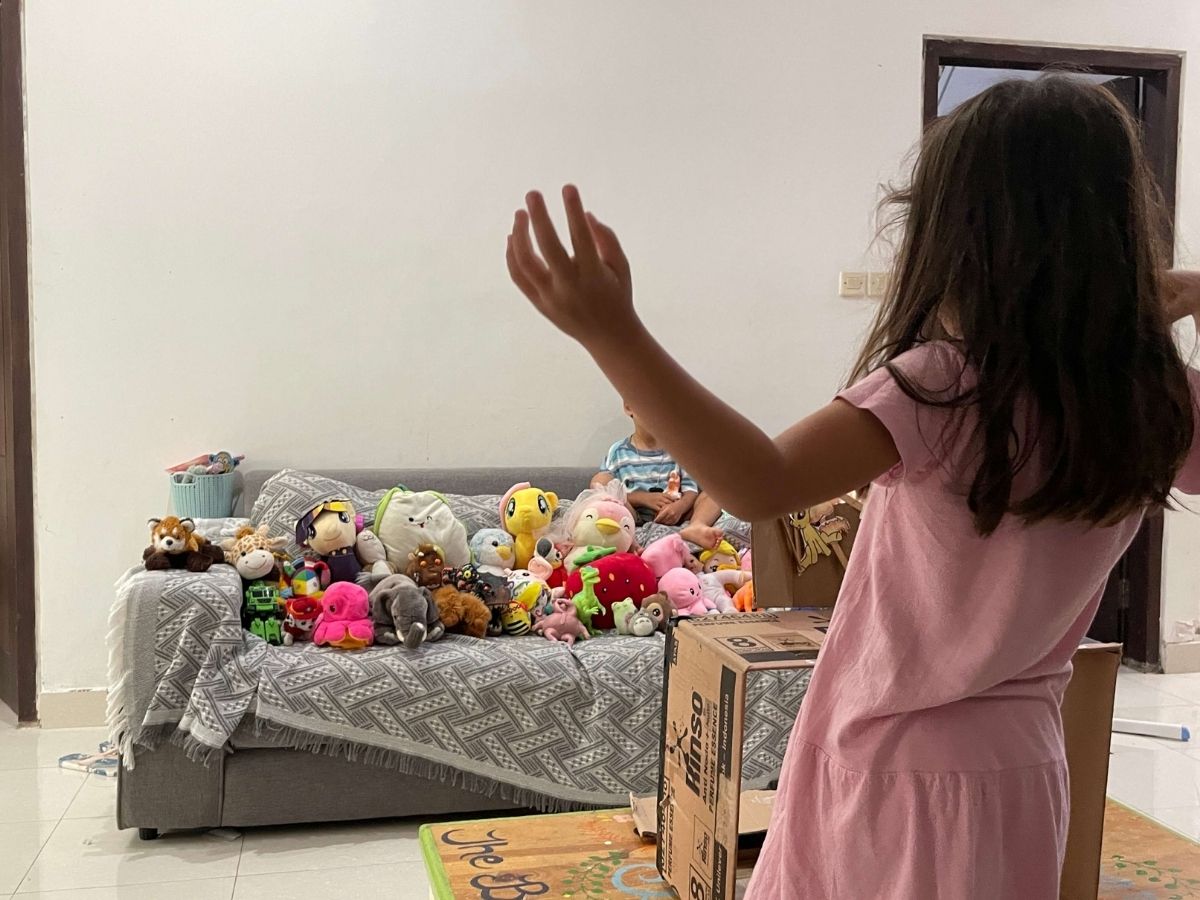
Leave a Reply